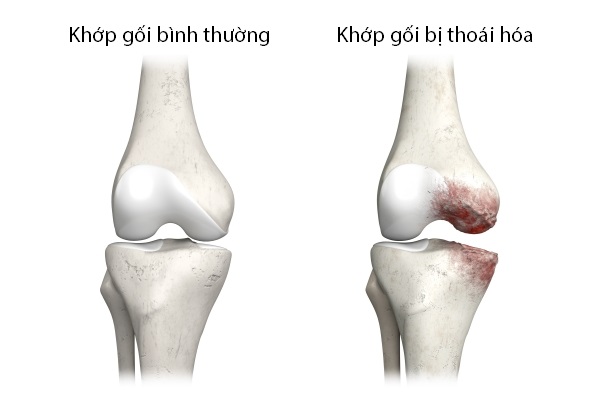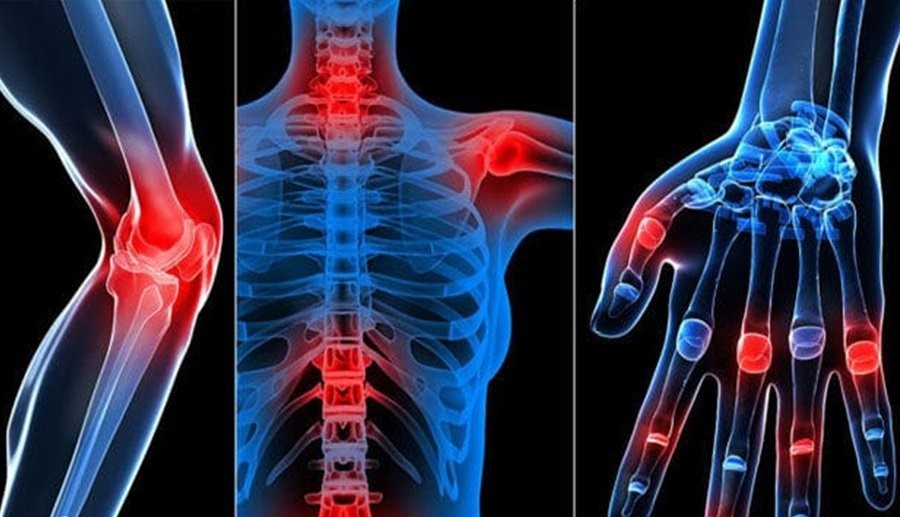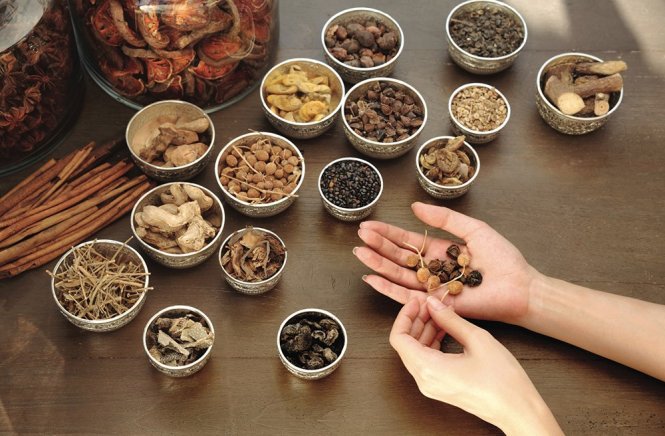
Osteoarthritis
Osteoarthritis
Bone and Joint Diseases from the Perspective of Traditional Medicine
Osteoarthritis is an increasingly common chronic disability condition that significantly contributes to immobility in the elderly. Many arthritis patients use traditional treatments such as herbal medicine, acupuncture, massage, and acupressure to alleviate symptoms. Alongside pain relief medications in Western medicine, traditional herbal remedies for bone and joint health, combined with non-pharmacological approaches, have shown effectiveness in reducing pain and stiffness in osteoarthritis patients while minimizing side effects.
Bone and joint diseases affect the musculoskeletal system, including bones, muscles, joints, and ligaments. These chronic conditions are prevalent worldwide. In Vietnam, approximately 47.6% of people over the age of 60 suffer from musculoskeletal disorders, including rheumatoid arthritis, ankylosing spondylitis, systemic diseases, osteoporosis, osteoarthritis, and metabolic joint diseases such as gout.

Overview of Osteoarthritis Treatment
Osteoarthritis is a chronic and progressive disorder of the synovial joints, caused by multiple factors. It is characterized by cartilage degeneration and abnormal bone remodeling. There are four main treatment approaches:
- Non-pharmacological therapy
- Pharmacological therapy
- Complementary and alternative medicine
- Surgical intervention
The first-line treatment should always involve minimally invasive therapies, and at least one method from the first two categories should be applied to all arthritis patients.
Pharmacological Treatment
- Acetaminophen (Paracetamol): Recommended for mild to moderate arthritis pain. While it may not provide complete relief, it is less toxic and is often the first-line treatment for osteoarthritis.
- Non-Steroidal Anti-Inflammatory Drugs (NSAIDs): Including COX-2 inhibitors, these are prescribed for moderate to severe pain when acetaminophen is insufficient. However, NSAIDs can cause gastrointestinal bleeding, hypertension, and kidney dysfunction.
- Opioid Painkillers: Used for severe osteoarthritis pain, but they carry significant side effects such as respiratory depression and constipation.
- Surgical Treatment: Reserved for patients whose symptoms are unresponsive to medication and who are in good enough health to undergo surgery. However, surgery may not be suitable for the elderly due to multiple comorbidities.
For many elderly patients, traditional medicine offers a viable alternative to pharmacological treatments.

Traditional Medicine in the Treatment of Bone and Joint Diseases
Traditional Medicine Perspective on Osteoarthritis
Traditional medicine categorizes bone and joint diseases under the concept of “chứng tý” (pain and obstruction syndrome). This occurs when blood and energy flow (khí huyết) is blocked, reducing circulation to joints and muscles, leading to localized pain and stiffness.
Causes of musculoskeletal disorders in Traditional Medicine:
- External Pathogenic Factors (Lục Tà – Six External Evils): These include wind (phong), cold (hàn), heat (hỏa), dampness (thấp), dryness (táo), and summer heat (thử). Among these, wind, cold, dampness, and heat are the main culprits in arthritis, causing poor blood circulation and joint pain.
- Injury or Trauma: Physical injuries can disrupt blood circulation, leading to stagnation and inflammation, contributing to chronic pain.
- Dietary and Internal Factors: Poor diet, chronic illness, aging, and weakened organ function (especially the liver and kidneys) can result in insufficient nourishment for the bones, muscles, and ligaments.
Traditional Medicine Principle: “Trị phong tiên trị huyết” – Treat the blood before treating the wind.
This means that poor blood circulation is the root cause of chronic pain, and treatments must first enhance blood flow.

Key Traditional Medicine Herbs for Bone and Joint Health
-
Tứ vật thang (Four-Ingredient Decoction) for blood circulation:
- Chuanxiong (Ligusticum chuanxiong) – Activates blood circulation.
- Dang Gui (Angelica sinensis) – Nourishes and revitalizes the blood.
- Bai Shao (Paeonia lactiflora) – Relieves muscle stiffness and spasms.
-
Tứ quân thang (Four Gentlemen Decoction) for energy and immunity:
- Codonopsis pilosula (Đẳng sâm) – Strengthens energy levels.
- Licorice Root (Cam thảo) – Supports digestion and enhances the effects of other herbs.
-
Additional Herbs:
- Achyranthes bidentata (Ngưu tất) – Strengthens the kidneys and promotes blood circulation.
- Eucommia ulmoides (Đỗ trọng) and Taxillus chinensis (Tang ký sinh) – Strengthen bones and joints.
- Ginger (Sinh khương) – Warms the body and enhances herbal absorption.
- Cinnamon (Quế tâm, Quế chi) – Improves circulation and joint flexibility.

Complementary Traditional Therapies for Joint Health
Non-Pharmacological Treatments for Arthritis
Traditional medicine also incorporates non-drug therapies for pain relief and functional improvement:
- Acupuncture: Stimulates energy flow and reduces inflammation.
- Acupressure & Massage Therapy: Improves blood circulation and relieves muscle stiffness.
- Tai Chi and Yoga: Improves flexibility, balance, and joint health.
- Herbal Baths & Compresses: Warm herbal solutions help reduce swelling and pain.
These complementary therapies have been scientifically proven to improve joint function and mobility, with one-third of chronic pain patients reporting significant benefits.

Conclusion
Traditional medicine has a long history of providing effective and safe treatments for bone and joint disorders. However, it is essential to consult a specialist before using herbal medicine, especially for elderly patients or those with multiple chronic conditions. Some traditional remedies lack clinical evidence, so careful consideration is necessary.
Non-drug therapies like acupuncture, massage, and exercise have proven benefits and can be easily integrated into daily routines for long-term joint health.
Try Kanpo 211 – a traditional Japanese medicine designed to reduce swelling, inflammation, and joint pain through ancient healing techniques.
